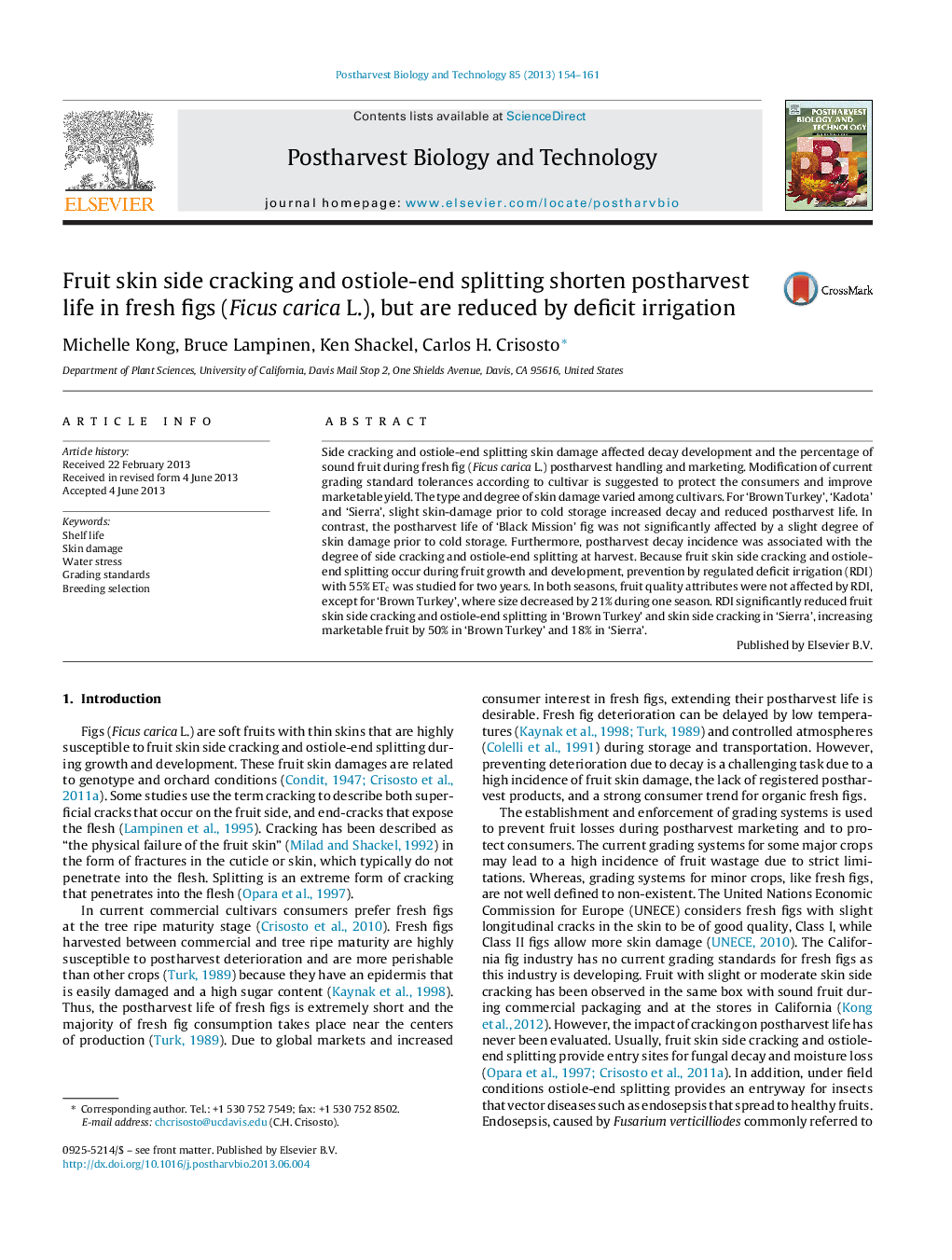| Article ID | Journal | Published Year | Pages | File Type |
|---|---|---|---|---|
| 4518413 | Postharvest Biology and Technology | 2013 | 8 Pages |
•Postharvest decay in fresh figs depends on the degree of skin damage at harvest.•Some fig cultivars tolerate slight degree of skin damage better than others.•Regulated deficit irrigation (55%) reduced fruit skin damage.
Side cracking and ostiole-end splitting skin damage affected decay development and the percentage of sound fruit during fresh fig (Ficus carica L.) postharvest handling and marketing. Modification of current grading standard tolerances according to cultivar is suggested to protect the consumers and improve marketable yield. The type and degree of skin damage varied among cultivars. For ‘Brown Turkey’, ‘Kadota’ and ‘Sierra’, slight skin-damage prior to cold storage increased decay and reduced postharvest life. In contrast, the postharvest life of ‘Black Mission’ fig was not significantly affected by a slight degree of skin damage prior to cold storage. Furthermore, postharvest decay incidence was associated with the degree of side cracking and ostiole-end splitting at harvest. Because fruit skin side cracking and ostiole-end splitting occur during fruit growth and development, prevention by regulated deficit irrigation (RDI) with 55% ETc was studied for two years. In both seasons, fruit quality attributes were not affected by RDI, except for ‘Brown Turkey’, where size decreased by 21% during one season. RDI significantly reduced fruit skin side cracking and ostiole-end splitting in ‘Brown Turkey’ and skin side cracking in ‘Sierra’, increasing marketable fruit by 50% in ‘Brown Turkey’ and 18% in ‘Sierra’.
